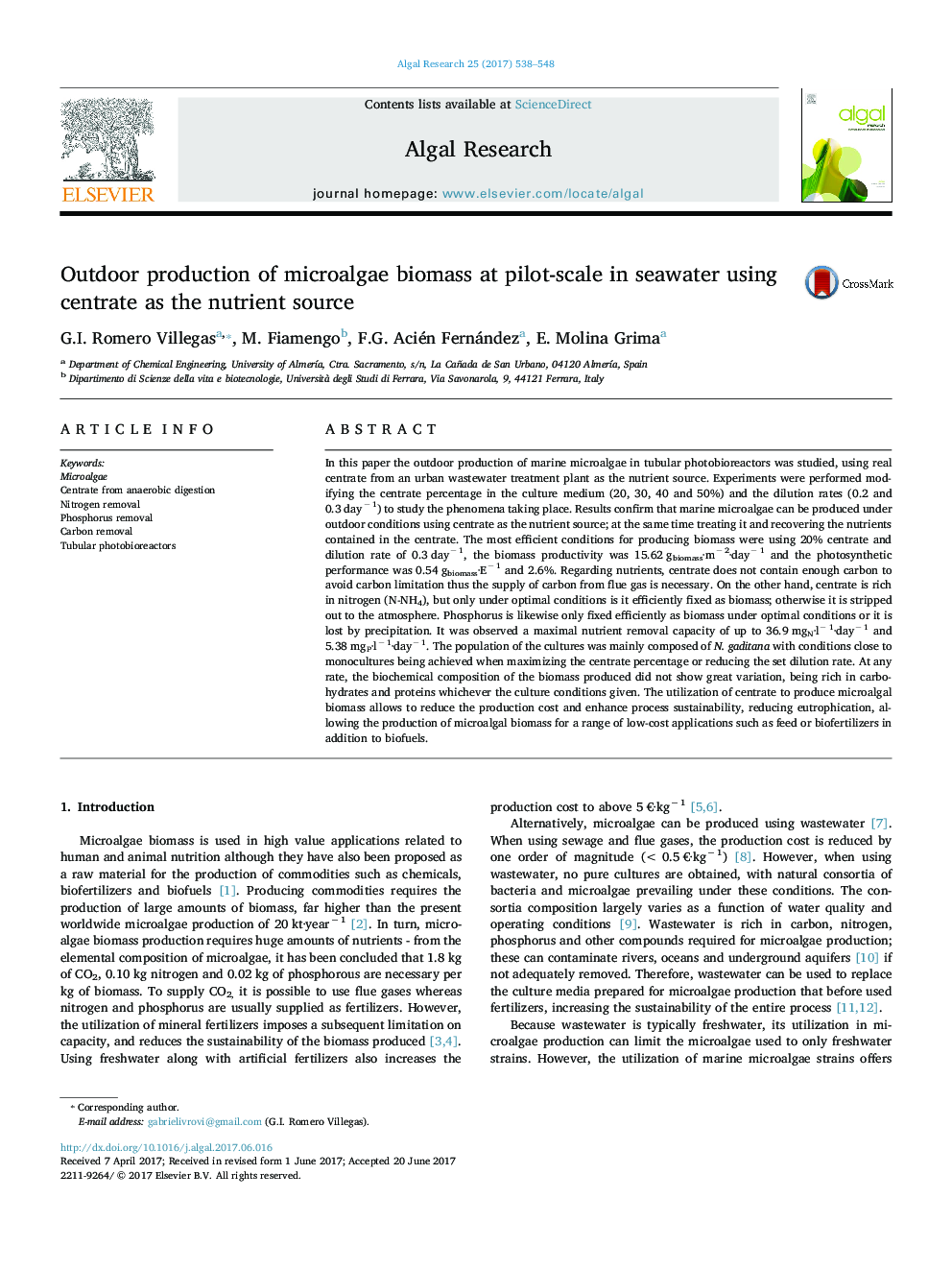| Article ID | Journal | Published Year | Pages | File Type |
|---|---|---|---|---|
| 5478375 | Algal Research | 2017 | 11 Pages |
Abstract
In this paper the outdoor production of marine microalgae in tubular photobioreactors was studied, using real centrate from an urban wastewater treatment plant as the nutrient source. Experiments were performed modifying the centrate percentage in the culture medium (20, 30, 40 and 50%) and the dilution rates (0.2 and 0.3 dayâ 1) to study the phenomena taking place. Results confirm that marine microalgae can be produced under outdoor conditions using centrate as the nutrient source; at the same time treating it and recovering the nutrients contained in the centrate. The most efficient conditions for producing biomass were using 20% centrate and dilution rate of 0.3 dayâ 1, the biomass productivity was 15.62 gbiomass·mâ 2·dayâ 1 and the photosynthetic performance was 0.54 gbiomass·Eâ 1 and 2.6%. Regarding nutrients, centrate does not contain enough carbon to avoid carbon limitation thus the supply of carbon from flue gas is necessary. On the other hand, centrate is rich in nitrogen (N-NH4), but only under optimal conditions is it efficiently fixed as biomass; otherwise it is stripped out to the atmosphere. Phosphorus is likewise only fixed efficiently as biomass under optimal conditions or it is lost by precipitation. It was observed a maximal nutrient removal capacity of up to 36.9 mgN·lâ 1·dayâ 1 and 5.38 mgP·lâ 1·dayâ 1. The population of the cultures was mainly composed of N. gaditana with conditions close to monocultures being achieved when maximizing the centrate percentage or reducing the set dilution rate. At any rate, the biochemical composition of the biomass produced did not show great variation, being rich in carbohydrates and proteins whichever the culture conditions given. The utilization of centrate to produce microalgal biomass allows to reduce the production cost and enhance process sustainability, reducing eutrophication, allowing the production of microalgal biomass for a range of low-cost applications such as feed or biofertilizers in addition to biofuels.
Related Topics
Physical Sciences and Engineering
Energy
Renewable Energy, Sustainability and the Environment
Authors
G.I. Romero Villegas, M. Fiamengo, F.G. Acién Fernández, E. Molina Grima,
